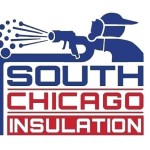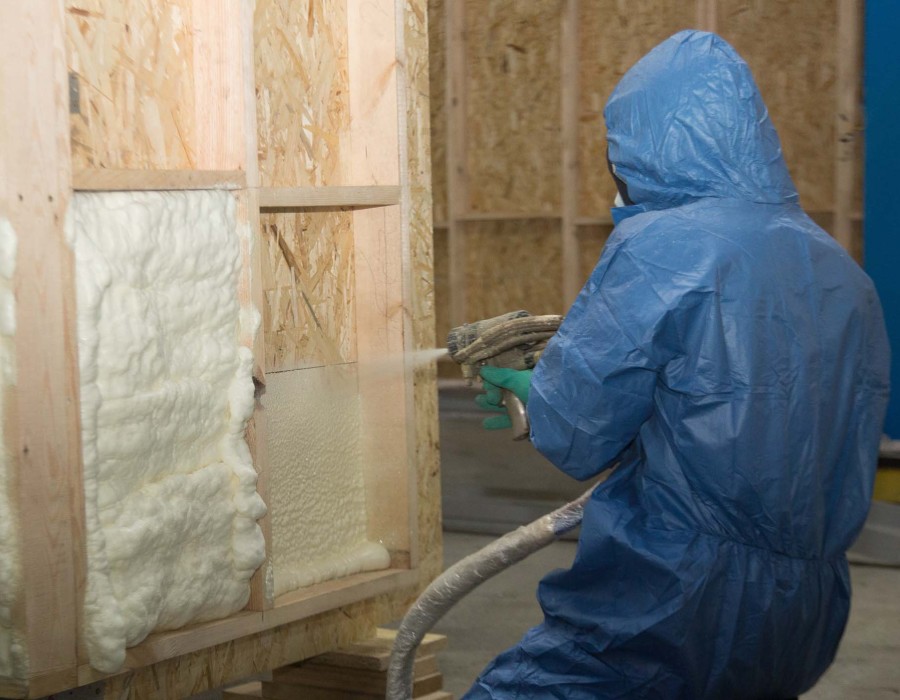Quality insulation protects a home's structural elements in Naperville by providing a strong defense against the two biggest threats to a building's longevity: moisture and extreme temperature cycles. A quality insulation contractor in Naperville, especially one using closed-cell spray foam, creates a complete air and vapor barrier. In cold, damp winters, this prevents the condensation that leads to rot and mold in the home's wooden frame, and in the summer, it buffers the structure from intense heat that can accelerate the aging of materials. Understanding the science behind these benefits shows how a well-insulated home is designed to last for generations, as the rigid nature of closed-cell foam can also add significant physical strength to wall and roof assemblies, making the entire structure more durable.
Moisture: The Number One Threat to a Home's Structure
Moisture is the primary enemy of a home's wooden frame. It is the leading cause of rot, decay, and the growth of destructive fungi. In a climate like Naperville's, with its cold winters and humid summers, this moisture can come from several sources, but the most common and insidious is hidden condensation.
The Science of Condensation
Condensation happens when warm, moist air comes into contact with a surface that is cold enough to be at or below the "dew point." In the winter, the warm, relatively humid air inside a house can leak into a cold, uninsulated wall cavity and hit the freezing exterior sheathing. This causes the water vapor to condense into frost or liquid water, which can slowly rot the wood studs and sheathing from the inside out.
How Insulation Provides Moisture Protection
A high-performance insulation system is designed to stop this process. Closed-cell spray foam is particularly effective because it is a "vapor impermeable" material. When applied to the interior of the exterior walls, it creates a seamless vapor barrier that stops the movement of this moisture-laden air, keeping the wall cavity dry and protecting the wood from the conditions that lead to rot.
Protecting the Roof from Damaging Ice Dams
In a snowy climate like the Chicago area, one of the most destructive forces for a roof is an ice dam. This happens when heat from the house escapes into a poorly insulated attic, warming the underside of the roof deck. This melts the snow on the roof, and the water runs down until it reaches the cold eaves, where it refreezes. This process repeats, building a "dam" of ice that can back water up under the shingles, leading to serious leaks, rot, and water damage to the roof deck, the insulation, and the ceiling below.
A properly insulated and air-sealed attic keeps the attic space cold in the winter, at or near the outdoor temperature. This prevents the snow on the roof from melting in the first place, completely eliminating the conditions that cause ice dams to form.
Adding Physical Strength to the Building Assembly
A home's structure is a system of interconnected parts. The stronger those connections, the more resilient the building is to outside forces.
The "Glue" That Holds a Home Together
Closed-cell spray foam is unique among common insulation materials in its ability to add physical strength. It is applied as a liquid that expands and cures into a hard, dense plastic, and it adheres powerfully to almost any building material. When it is applied to the interior of a wall, it does not just sit in the cavity; it bonds the studs and the sheathing together into a single, solid, and incredibly strong unit.
This composite action has been shown in independent studies to dramatically increase a wall's "racking strength," which is its ability to resist being pushed out of square by lateral forces, such as those from the high winds of a severe thunderstorm.
Here is a look at how different insulation types contribute to a home's durability:
Things to Consider for a More Durable Home
- A Systems-Based Approach is Key: Building a durable home is about creating a complete system where all the components work together to manage the forces of nature. The insulation, the weather-resistant barrier, the flashing, and the roof all need to be properly integrated.
- Professional Installation is a Must: The structural and moisture-blocking benefits of closed-cell spray foam are only realized if it is installed correctly by a certified, professional spray foam insulation company who understands the building science behind high-performance construction.
- Fix All Leaks First: No insulation can stop a bulk water leak. Before any insulation upgrade, it is critical to ensure that the roof, windows, and foundation are all in good, watertight condition.
Bonus Tip: The rim joist, the wooden perimeter that sits on top of a home's foundation in a basement or crawl space, is a major source of air leakage and moisture intrusion in a cold climate. Applying closed-cell spray foam to this area not only insulates and air seals but also protects the wooden sill plate from the damp conditions of the basement, a critical step in preserving the home's structural base.
Common Questions About Insulation and Home Durability
If closed-cell foam is a vapor barrier, can it trap moisture in my walls?
This is a key building science question. In a cold climate like Naperville's, the primary direction of vapor drive in the winter is from the inside out. A professional will design the wall system to ensure that the foam is the primary condensing surface and that it can handle this moisture without any damage to the structure. This often involves using a "vapor retarder" paint on the interior drywall, which is designed to slow vapor movement just enough to prevent issues without creating a problematic double barrier.
Is open-cell foam also good for preserving the home's structure?
Open-cell foam is an excellent air barrier, which does help with durability by controlling the movement of air-transported moisture. However, it is not a vapor barrier and does not add the same level of physical strength as the denser closed-cell foam. For this reason, closed-cell foam is generally the preferred choice when preservation and strength are the primary goals.
Will this make my house too stiff?
The added racking strength is a positive feature that makes the home more resilient. It helps the walls to resist the lateral forces from wind and remain square, which can reduce the overall stress on the structure.
Final Thoughts on Building a Home That Lasts
The role of insulation in a modern home goes far beyond simple temperature control. It is a critical component of the home's entire structural and environmental control system. By choosing an insulation like closed-cell spray foam, homeowners in Naperville are making a smart, proactive investment in the long-term strength and durability of their property. It is an upgrade that creates a home that is not just more efficient and comfortable, but also more resilient and better prepared to stand the test of time.
Get a Professional Home Durability Assessment
To learn more about how a high-performance insulation system can improve the strength and longevity of your home, the best first step is a professional evaluation. An experienced insulation contractor can assess your home's specific needs and recommend the most effective solutions. For homeowners in the Naperville area, the team at South Chicago Insulation has deep expertise in building durable, high-performance homes. They can be reached for a consultation by email at [email protected] or by phone at (779) 803-8025.
Author: Bob Gasca attended his first spray foam training in 2007 and has continued to pursue yearly training to stay current with the latest technology and practices. He is a certified Spray Foam Master Installer through the SPFA and a member of the SPFA. Additionally, Bob serves as a Spray Foam Worldwide Ambassador, sharing information with spray foam professionals globally. Recently, he returned from a building science training, where he expanded his knowledge on how weather conditions affect home performance, helping him better diagnose and improve home health for families. Bob specializes in finding solutions to complex moisture and air infiltration issues.
Reviewer: Noah Gonzalez reviewed this article and drew on 9 years of experience to offer suggestions that make the guidance more directly useful for insulation contractors.








Comments